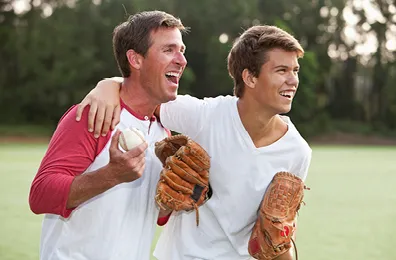Part of the Do's and don'ts series – how to keep children and young people safe in sport.
Any physical contact with children and young people must be necessary and appropriate to the delivery of your sport’s programs or services and based on the needs of the child or young person, such as assisting with the use of equipment, technique assistance or correction, treatment by a health practitioner or administering first aid.
Watch the video about physical contact
Do
- Seek a child or young person’s permission to touch or interact when demonstrating an activity.
- Check that physical contact is acceptable to a particular child or young person.
- Even non- intrusive touch may be inappropriate if a child or young person indicates they do not wish to be touched.
- Respect and respond to signs that a child or young person is uncomfortable with touch.
- Use verbal directions rather than touch (for example, ask a child or young person to move in a particular way, rather than physically place the child or young person in the required position).
- Discourage children and young people from inappropriate expectations of hugs or cuddles. This should be done gently and without embarrassment or offence to the child or young person (for example, offer a high five as encouragement).
- Kindly and appropriately tell a child or young person who is inappropriately or excessively touching another child or young person to stop and raise the concern with a relevant person within your organisation.
- Use non-intrusive gestures to comfort a child or young person who is experiencing grief and loss or distress, such as a hand on the upper arm or upper back.
- Use non-intrusive touch (for example, congratulating a child or young person by shaking hands or a pat on the upper arm or back). Try to accompany such touch with positive encouraging words.
- Report any physical contact initiated by a child or young person that is sexualised or inappropriate (for example, acts of physical aggression) as soon as possible to your organisation. This ensures the situation can be managed in the interests of the safety of the child or young person and any other participants.
Don't
- Under any circumstances, have contact with a child or young person that involves touching any intimate part of a child or young person’s body (for example, genitals, bottom or breast area) – other than as part of delivering necessary medical or allied health services to those specific areas of the body.
- Initiate, allow or request inappropriate or unnecessary physical contact with a child or young person (for example, massage, kisses, tickling and wrestling games) or facilitate situations that unnecessarily result in close physical contact with a child or young person.
- Have unnecessary contact with a child or young person (for example, assisting with toileting when a child or young person does not require assistance).
- Force a child or young person to do something against their wishes, unless it is necessary to prevent injury to the child or young person or to others.



